Dropshipping Accounting: Tips For Managing Your Finances
Starting a dropshipping business can be an exciting venture, but it comes with its own set of challenges, one of which is dropshipping accounting.
Thus, managing your books and finances can seem daunting, but it’s crucial to stay on top of them to ensure the success of your business.
In this article, we’ll cover the basics of dropshipping accounting, including managing invoices, overselling, and taxes, and provide tips on how to streamline the process. Let’s start!


Table of Contents
- Dropshipping Accounting: What You Need to Know As A Beginner
- Introduction To Bookkeeping For Dropshipping
- Managing Dropshipping’s High Volumes Of Invoices
- The No. 1 Tool for all dropshippers – now with AI
- Manage Overselling When Doing Your Dropshipping Accounting
- What Sales Taxes Do I Need To Pay When Dropshipping?
- Benefits Of Accounting Software For A Dropshipping Business
- Best 5 Accounting Software For Dropshipping
- Key Takeaways On Bookkeeping And Dropshipping Accounting
- Frequently Asked Questions
Dropshipping Accounting: What You Need to Know As A Beginner

Managing the financial side of your dropshipping business is crucial for success.
Thus, you must keep track of every financial transaction to make sure your business is profitable and follows tax rules. This means you need to record and monitor sales, expenses, and payments accurately.
And, this is a MUST since you’ll understand how much money is coming in and going out of your business.
So, what exactly will you be doing, when performing these tasks? Well, this is what we call dropshipping accounting, or dropshipping bookkeeping.
But, let’s explain this a little bit more.
In fact, dropshipping accounting is a broader term that includes bookkeeping and analyzing financial data. It involves making financial statements, looking at how your business is doing, and forecasting future performance. This helps you make smart decisions that can help your business in the long run.
👉 Read about Do I Need an LLC For Dropshipping? The Sellers Guide.
But, let’s be honest. It can be tough to manage many invoices and inventory levels, and overselling can cause problems as well. Though, there are solutions that can make dropshipping accounting easier. So, let’s find out about it!
Introduction To Bookkeeping For Dropshipping
Bookkeeping involves the daily recording of financial transactions such as sales, assets, payments, and receipts.
It focuses on maintaining accurate and up-to-date financial records that can be used to generate reports and statements that help dropshippers make informed decisions.
Regarding dropshipping bookkeeping, each financial transaction is recorded in an account – a record of all debit and credit entries of a particular type.
Thus, there are five basic types of accounts that serve as the building blocks for your general ledger:
- Assets – any resources or things of value that a company owns due to its financial transactions, such as inventory or accounts receivable.
- Liabilities – represent the obligations and debts owed by a company to suppliers, banks, lenders, or other providers of goods and services, such as small business loans or accounts payable.
- Revenues – money earned by the company through sales or providing a service.
- Expenses -cash flowing out of the company to pay for assets or services, such as utilities, business insurance, or salaries.
- Equity – the remaining value of an owner’s interest in a company after you subtract all liabilities, such as stock or retained earnings.
In fact, bookkeeping is the foundation of accounting. Bookkeepers focus on recording and classifying financial transactions accurately, while accountants focus on interpreting and analyzing the data to provide insights into a business’s financial health.
Managing Dropshipping’s High Volumes Of Invoices
Dropshipping involves high volumes of transactions, and managing all the invoices manually can be overwhelming. Thus, there are various ways to try simplifying your work. So, we will give you some tips:
➡ Automate the process
You can save time and reduce errors by using dropshipping accounting software that can automatically generate and send invoices.
We highly recommend you choose this tip. For that purpose, we will list the Top 5 accounting software below in this article.
➡ Keep track of all invoices
Choose a system to organize and store all your invoices in one place, including those for returns, refunds, and chargebacks.
For example, you can assign unique identifiers (ex. invoice.id) to each data point, like invoice number, amount, handling cost, and address. This way, you can efficiently organize and track your invoices.
➡ Use electronic invoicing
Furthermore, you will reduce the need for paper invoices and manual data entry by using e-invoicing. This is an efficient way to manage large volumes of invoices digitally.
➡ Set up a schedule
Next, if you create a schedule for invoicing, you can succeed to stay on top of your invoices and avoid late payments or missed invoices.
➡ Offer multiple payment options
By accepting various payment methods such as credit cards, or PayPal, you can reduce the time it takes to process invoices.
👉 Check out the 7 Best Payment Gateways For Shopify In 2024.
➡ Outsource invoicing
Consider outsourcing the task to a third-party provider if managing invoices becomes too overwhelming.
Hence, this can help you free up time to focus on other aspects of your business while ensuring that your invoices are handled professionally and efficiently.
👉 Read about The 13 Best Shopify Wholesale Apps for Your Dropshipping Business.
Manage Overselling When Doing Your Dropshipping Accounting
Dropshipping can seem like the ultimate solution to inventory management headaches. But it’s not without its own set of problems, chief among them being the risk of overselling.
Since you’re not directly responsible for managing your inventory, it’s essential to keep a close eye on the inventory levels of your dropshipping suppliers.
And of course, the most important thing is to choose your dropshipping suppliers wisely.
Thus, if you want to find reliable dropshipping suppliers, we recommend you check on reliable sources and platforms like Dropshipping.com. For example, they have a huge supplier base of more than 2100 suppliers to choose from.
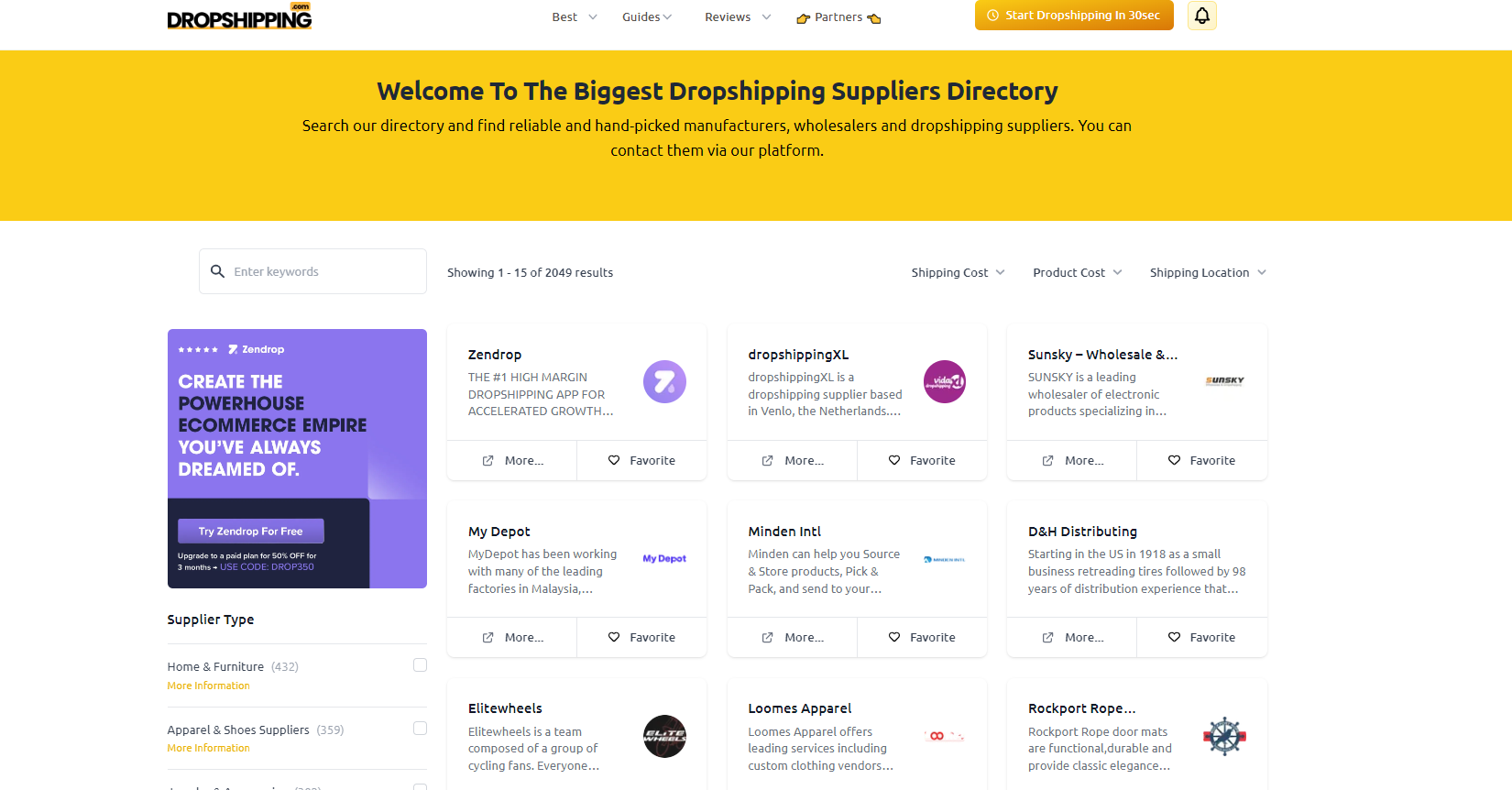
Moreover, you can contact them and make sure they give you information about overselling before even starting.
However, to avoid overselling, you need to take some proactive steps.
- Start by vetting your suppliers to ensure that they can provide accurate and up-to-date information about inventory levels.
- Don’t hesitate to ask them tough questions about their overselling policies and who takes responsibility in case an item becomes unavailable.
- While working with multiple suppliers can help you diversify your inventory, it can also add a layer of complexity to your inventory management.
- Be careful about keeping track of the inventory levels of each supplier.
- Set up automated inventory tracking. Use a robust inventory management system that integrates with your dropshipping platform.
However, the key is to strike the right balance between diversity and manageability. With the right approach, you can guide the tricky waters of dropshipping inventory management and keep your customers happy.
💡 Tip: Check out Inventory Source Review: The Best Automation Software for Dropshipping?
What Sales Taxes Do I Need To Pay When Dropshipping?

One of the most important dropshipping accounting aspects is taxes.
Sales tax is a form of consumption tax that is imposed by governments on the sale of products. So, in the US is known as a Sales tax, in the EU is VAT, and in Canada is GST.
As a dropshipper, it’s important to understand that the end customer is responsible for paying the sales tax since they are the ones who ultimately “consume” the product. You, as the vendor, simply act as an agent to collect the tax on the state’s behalf.
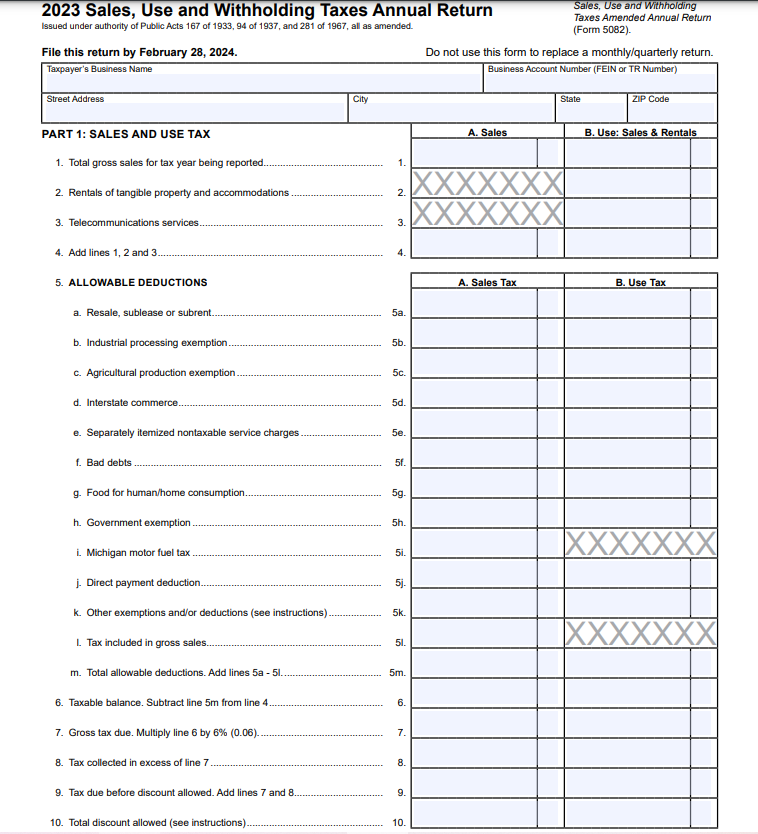
This means that you do not absorb the tax and must separately state it on the invoices or receipts you provide to your customers.
While some states have no sales tax, others can go as high as 11%, making it critical to understand your obligations as a vendor.
As a dropshipper in the US, it’s essential to note that you are responsible for collecting and remitting sales tax if you have sales tax nexus in the state where the order ships. This applies to both dropshipping suppliers and dropshippers alike.

In contrast, dropshippers in the European Union who are VAT-registered and source products from an EU supplier can rely on the reverse-charge mechanism to handle VAT on their purchase.

However, you should learn about all dropshipping taxes, so READ THIS: Dropshipping Taxes and Payments – Must-Know Facts.
Benefits Of Accounting Software For A Dropshipping Business
As we already mentioned above, one of our best tips for managing high-volume invoices, or accounting overall is using dropshipping accounting software. Wondering why? Let’s list some benefits:
🔸 Streamlined Financial Management
With accounting software, you can automate tasks like invoicing, expense tracking, and cash flow management.
👉 Read about How Much Does It Cost To Start Dropshipping In 2024?
Thus, this can save you valuable time, increase accuracy, and reduce the risk of costly errors.
🔸 Accurate Inventory Management
It’s crucial to keep track of stock levels to prevent overselling or running out of popular items. Accounting software can help you monitor inventory levels, set up automatic reorder points, and track the cost of goods sold to maintain optimal inventory levels.
🔸 Better Financial Insights
By generating detailed reports on your winning dropshipping products, profit margins, and expenses, accounting software provides valuable insights that can help you make informed business decisions.
These insights can be vital to the success and growth of your dropshipping business.
👉 Learn about Dropshipping Profit Margin: A Step-By-Step Guide For Beginners.
🔸 Simplified Tax Management
Accounting software can help simplify tax management by automatically calculating and tracking sales tax based on the state or country where the order ships. This can save you time and minimize the risk of non-compliance with tax laws.
🔸 Increased Efficiency
By automating repetitive tasks, accounting software can increase your efficiency and productivity. This frees up your time to focus on building your business, creating customer relationships, and increasing revenue.
Best 5 Accounting Software For Dropshipping
Quickbooks Online
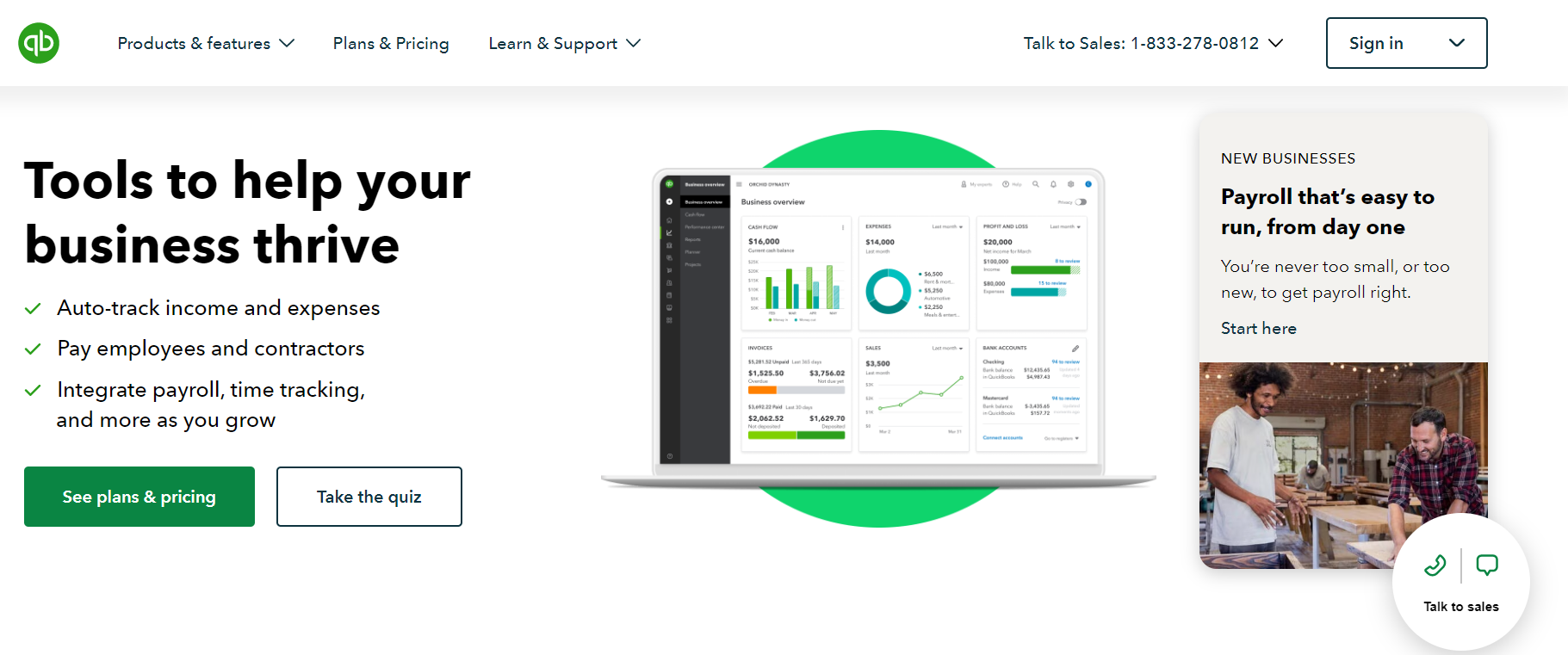
QuickBooks is a reliable accounting solution for years, trusted by professionals in the industry.
One of the most significant benefits of using QuickBooks is a lot of online training resources and forums available to users, providing support when necessary.
What’s more, when it comes to dropshipping accounting, QuickBooks integrates with a vast array of tools, making it easier than ever to manage your online store. Thus, by integrating Shopify with QuickBooks, you can ensure that your orders, inventory, customers, and shipping information are updated and accurate automatically.
Key Features:
- Invoice
- Track expenses
- Manage bills
- Get tax deductions
- Run reports
- Track miles
- Manage projects
- Manage payouts with bank deposits
- Calculate sales tax
- Manage e-commerce and more.
Also, with QuickBooks, you can even post e-commerce order information as batch journal entries or granular order-level posting.
Additionally, QuickBooks can sync with other e-commerce marketplaces, such as Etsy and Amazon, making it a comprehensive solution for all your accounting needs.
Furthermore, this dropshipping accounting software offers four pricing plans starting at $15/month. Check out all pricing plans and features.

What’s more, if you are not certain what you need, they offer a free consultation with their team, based on a few questions.
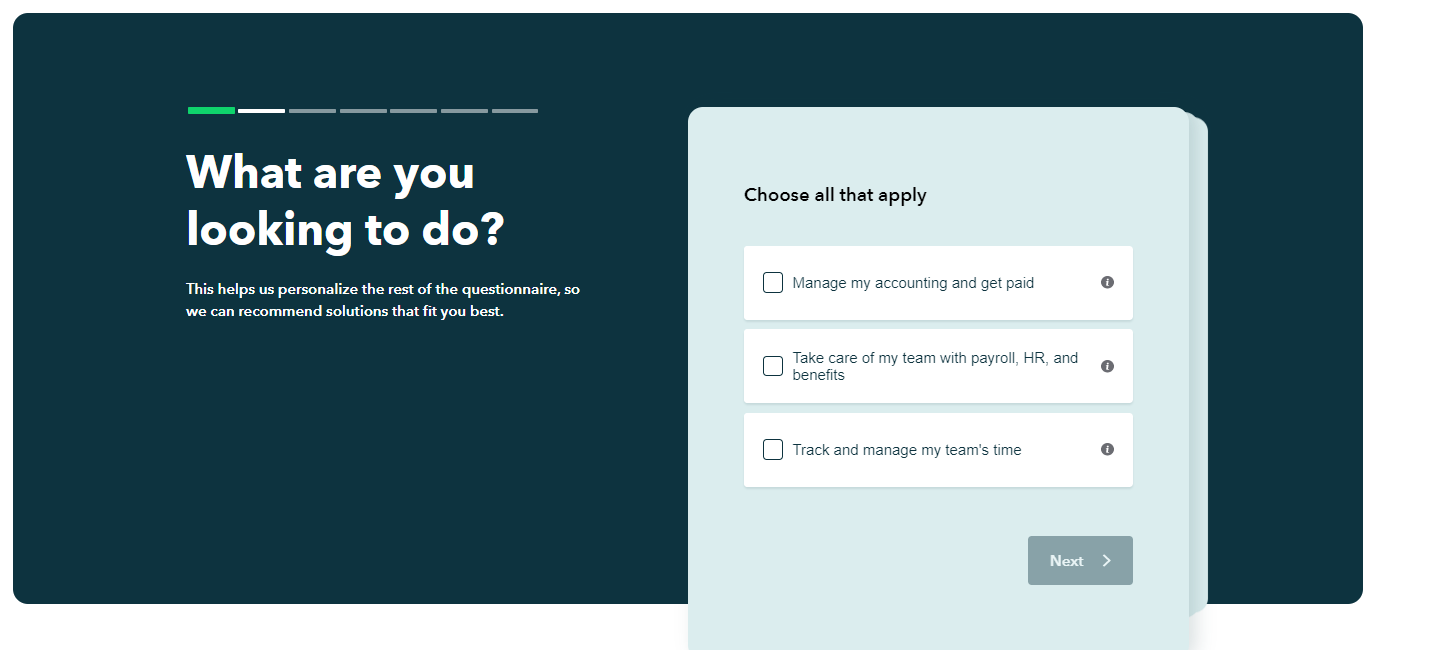
Xero

When it comes to dropshipping accounting software for micro-business owners, Xero is the name on everyone’s lips. Hence, with its intuitive interface and the option for unlimited users, Xero has become a go-to solution for small business owners who want to streamline their accounting process without breaking the bank.
One of the standout features of Xero is its ability to seamlessly integrate with third-party services, making it a comprehensive solution for all your business needs. This means that you can easily connect Xero with other tools and services, such as Stripe and GoCardless, to collect payments online from your customers.
- Pay bills
- Claim expenses
- Bank connections
- Accept payments
- Track projects
- Pay runs
- Bank reconciliation
- Capture data
- Files
- Reporting, & more.
Furthermore, Xero offers three pricing plans, starting at $29/month.

Also, there’s a 30-day free trial. So, if you want to check if this accounting software matches your need, you can do it for free.
Freshbooks

FreshBooks has emerged as a reliable solution by 2ndSite Inc. It was initially designed as invoicing software, and it remains one of the best options for businesses. Thus, compared to other dropshipping accounting software, FreshBooks offers more options for customizing invoices, making it easy to create invoices that look professional and reflect your brand.
What’s more, can also handle basic bookkeeping needs. So, whether you’re sending, receiving, printing, or paying invoices, FreshBooks makes it easy to stay on top of your finances.
As we already mentioned, one of the standout features of FreshBooks is its ability to create customized invoices that look professional. This can be a game-changer for your business if you want to build a dropshipping brand.
What’s unique about FreshBooks is that all financial data is stored in the cloud on a single unified ledger, which means that users can access the same set of books regardless of location, on both desktop and mobile devices.
Plus, FreshBooks offers a free API, enabling customers and 3rd-party software vendors to integrate external applications with the software. Not just that, but there’s also support for multiple tax rates and currencies. This is particularly useful for businesses that operate internationally.
FreshBooks also includes a payroll feature and a projects feature, which can be used to manage employee time and project expenses.
Also, you can manage Shopify orders in FreshBooks based on three objects:
- items
- invoices
- payments
Furthermore, FreshBooks offers four pricing plans, starting at $17/month. However, right now they offer a discount. Check it out.

Also, FreshBooks offers a 30-day free plan as well.
Wave
With its online platform and mobile app, Wave allows users to easily manage their financials through features such as invoicing, income and expense tracking, and receipt scanning.
However, while these basic accounting features are free, additional features such as customer payment processing and payroll come at a cost.
In fact, this flexibility allows Wave to cater to businesses with varying needs and budgets, making it an ideal option for those who prioritize affordability without sacrificing quality.

Key Features:
- Invoicing – Create and send professional invoices
- Payments – Accept credit cards and bank payments online
- Accounting – Track your income and expenses
- Payroll – Pay your staff and yourself in minutes
- Advisors – Get bookkeeping coaching
What’s more, this dropshipping accounting software wins when it comes to pricing. First, there are two completely free plans: Invoicing, and Accounting. Check out their features.
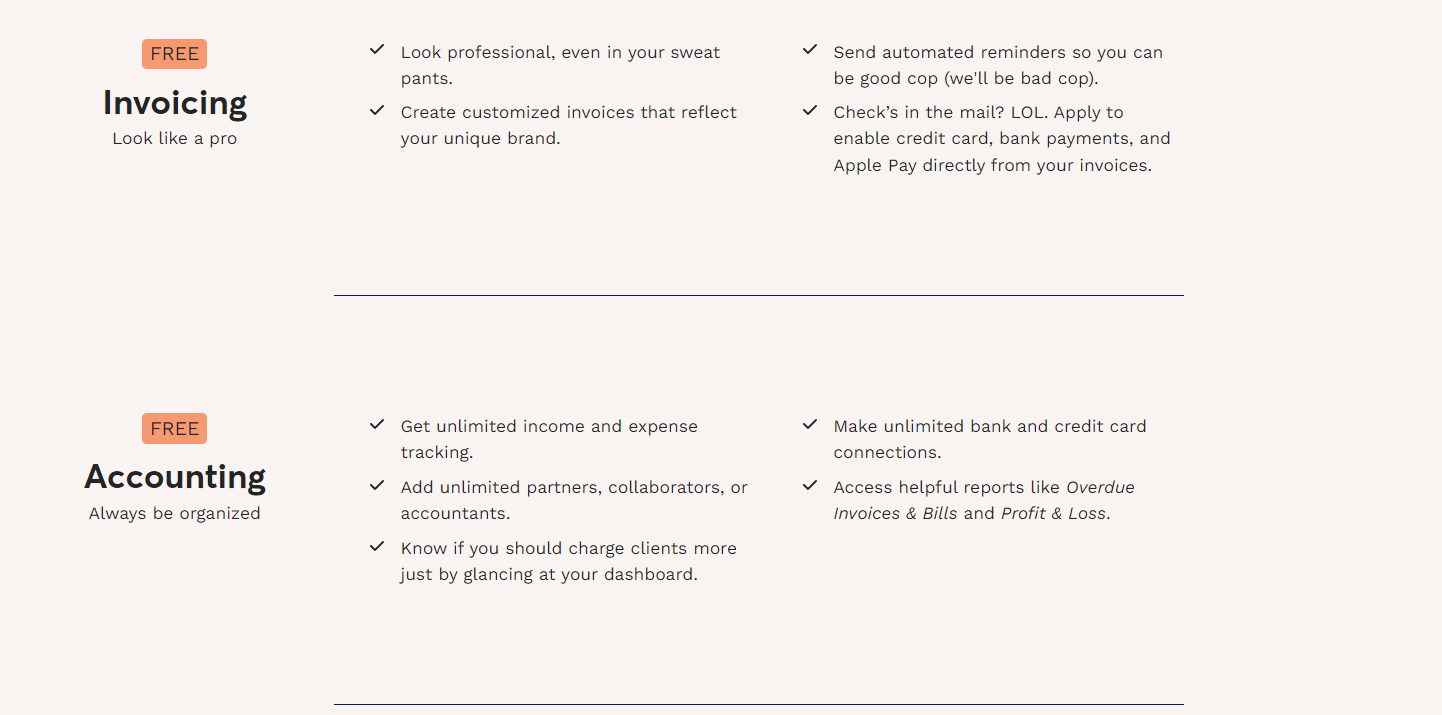
Also, there are different pricing options on Wave, based on what you need.

What’s more, this dropshipping accounting software has a Blog articles section on its website. Thus, they help users educate about accounting and everything in between.

Sage Accounting
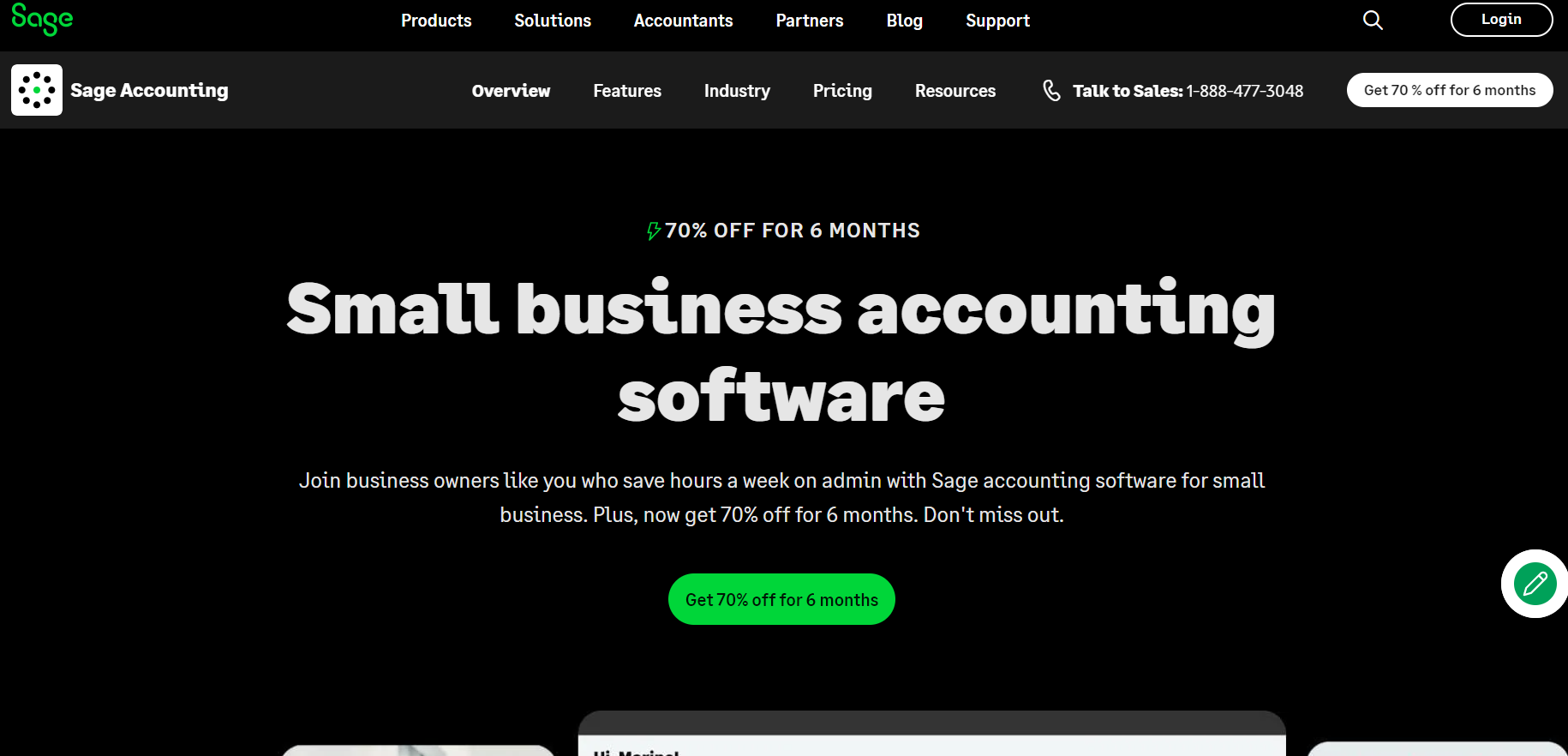
With its affordable pricing and basic features, Sage allows users to manage their financials with ease. Users can easily generate invoices, track their inventory, and monitor income and expenses in multiple currencies.
This flexibility makes Sage a particularly attractive choice for dropshippers that operate internationally or deal with foreign currencies.
Also, this dropshipping accounting software offers a super simple setup and maintenance. What’s more, it automates your workflows, sends and tracks invoices automatically, expenses, and manages cash flows.
Key Features:
- Mac compatible
- Accounts receivable
- Bank connections
- Mobile app
- Integrate invoice payments
- Accounts payable
- Invoicing
- Reporting
- Multi-currency
- Payments
- Stock management
- Billing
- Invoice templates
Furthermore, Sage Accounting offers two pricing plans, starting at $7.50/month. Plus, you can now get 70% off for 6 months.
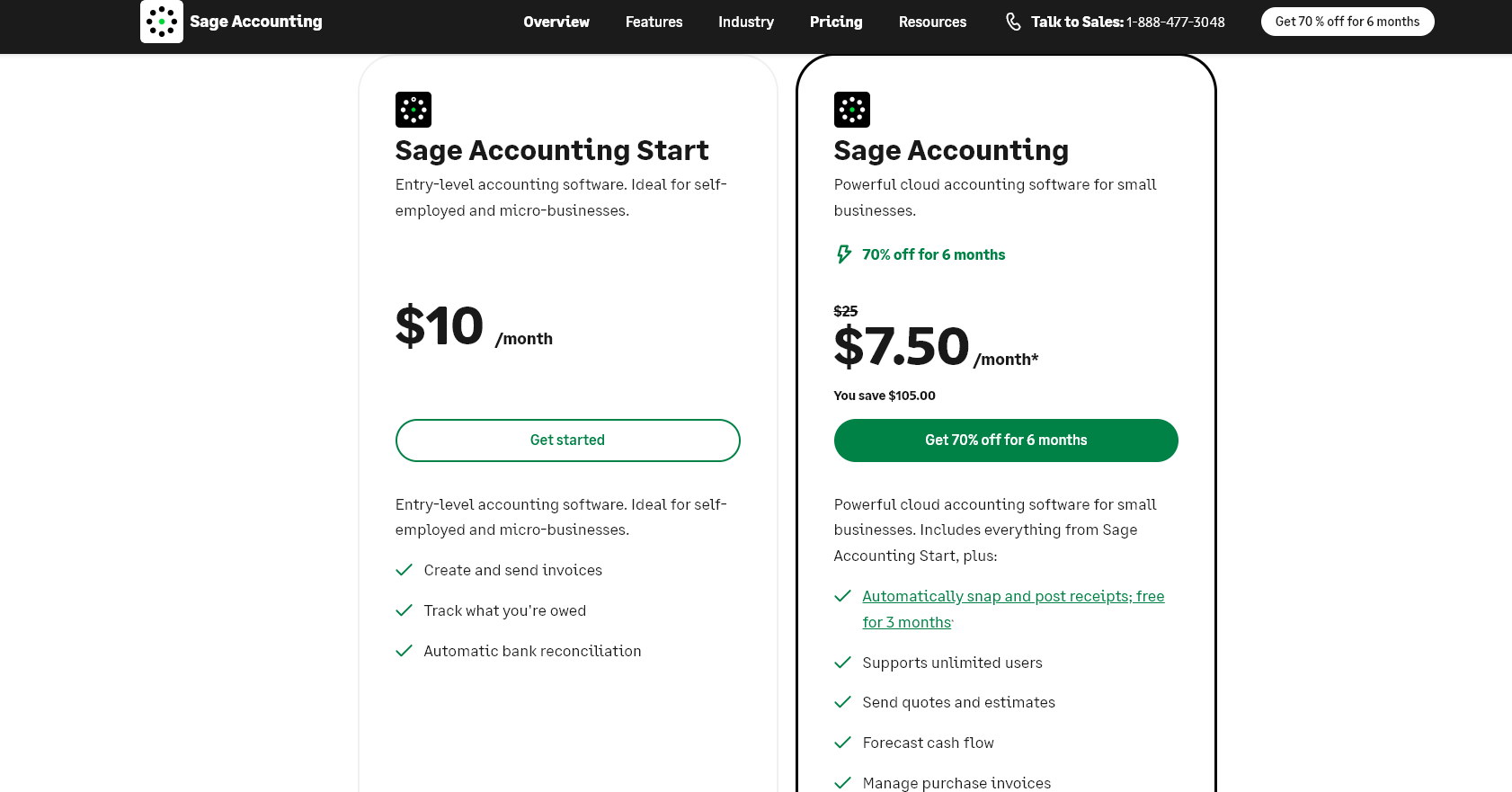
Key Takeaways On Bookkeeping And Dropshipping Accounting
In this article, we have covered the basics of dropshipping accounting, including managing invoices, overselling, and taxes, and provided tips on how to streamline the process.
Dropshipping accounting is critical to ensure the success of a dropshipping business. As a dropshipper, you need to keep track of every financial transaction that takes place to ensure that your business stays profitable and compliant with tax regulations.
Therefore, in this article, we discussed the Top 5 Dropshipping Accounting software for your dropshipping business and gave you a few tips & tricks on how to manage high-volume invoices and overselling.


Frequently Asked Questions
Do you need a bookkeeper or accountant for dropshipping?
As a dropshipper, you may not necessarily need a bookkeeper or accountant if you have a small business and can handle the bookkeeping tasks yourself. However, as your business grows, it is required to hire a professional accountant to handle your accounting tasks.
How do I set up my chart of accounts for dropshipping?
When setting up a chart of accounts for a dropshipping business, you should consider including assets, accounts for revenue, cost of goods sold, advertising expenses, shipping expenses, liabilities, and other business expenses.
In fact, it is important to organize your accounts in a way that makes sense for your dropshipping business.
Do I have to pay income tax for my dropshipping business?
Yes, you are required to pay income tax on the profits you earn from your dropshipping business.













![The Top 21 3PL Companies Compared [2024 List & Guide]](https://images.weserv.nl/?url=https://prod-dropshipping-s3.s3.fr-par.scw.cloud/2024/03/Frame-3922469.jpg&w=420&q=90&output=webp)